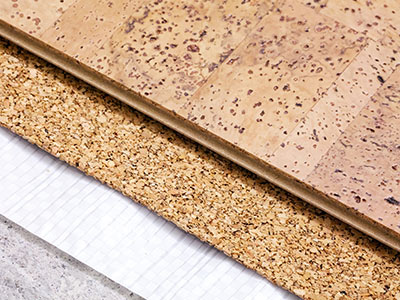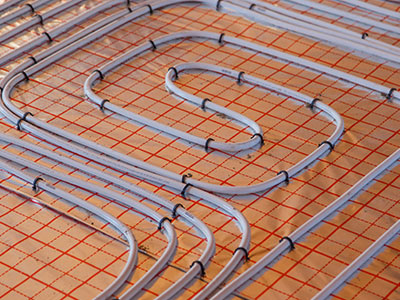Back to Flooring Products
How to Choose the Best Underlay for Wood Flooring
 Selecting the best underlay for wood flooring is crucial for achieving a stable, solid, and well-insulated floor. A high-quality underlay acts as a protective barrier against moisture, ensuring the wooden floor structure remains unaffected. It also offers insulation and soundproofing benefits, enhancing the comfort and longevity of your flooring. Conversely, using the wrong or low-quality underlay can lead to numerous issues you’ll want to avoid. In this comprehensive guide, you’ll discover expert tips on how to choose the perfect underlay for your wood floor installation project.
Selecting the best underlay for wood flooring is crucial for achieving a stable, solid, and well-insulated floor. A high-quality underlay acts as a protective barrier against moisture, ensuring the wooden floor structure remains unaffected. It also offers insulation and soundproofing benefits, enhancing the comfort and longevity of your flooring. Conversely, using the wrong or low-quality underlay can lead to numerous issues you’ll want to avoid. In this comprehensive guide, you’ll discover expert tips on how to choose the perfect underlay for your wood floor installation project.
Consider the Type of Subfloor
The type of subfloor you have will dictate the right underlay for wood flooring. For a plywood subfloor, additional moisture protection is essential. Experts advise against impermeable or closed-cell underlayments as they can prevent the floor from "breathing," leading to increased moisture and potential damage. Instead, choose an underlayment that allows moisture to escape, preventing mould growth.
For wooden subfloors, opt for a permeable or semi-permeable underlayment, often treated with asphalt and requiring overlapped seams for durability. Conversely, for concrete subfloors, an impermeable underlayment is necessary to prevent moisture absorption, which can harm the wooden floor’s condition, appearance, and stability. Extra precautions are needed with concrete subfloors to avoid condensation buildup, so ensure seams are taped and properly overlapped for maximum protection.
Consider the Type of Wood Flooring
When choosing the right underlay for wood flooring, it's crucial to consider not just the subfloor but also the type of wood flooring you plan to install. Different wood floors have unique requirements to ensure optimal performance and longevity.
For floating engineered wood floors and solid-hybrid floors, an impermeable padded underlayment is essential. This type of underlay provides a moisture barrier, cushioning, and sound insulation, enhancing the comfort and durability of your flooring. The padding helps to smooth out minor subfloor imperfections, providing a more even surface for the floating floor to rest on. Additionally, the impermeable nature prevents moisture from seeping up from the subfloor, protecting the wood from potential damage.
Conversely, for nail-down hardwood flooring, a paper underlayment is recommended. This type of underlayment offers a breathable layer that allows moisture to escape, preventing mould and mildew growth. It also reduces friction between the hardwood and subfloor, which can minimise squeaking and movement over time. The paper underlayment is typically treated to resist tearing and wear, ensuring it maintains its integrity during installation and beyond.
By carefully considering the type of wood flooring you are installing, you can select an underlay that not only meets the specific needs of your floor but also enhances its performance, comfort, and longevity. In this comprehensive guide, we’ll delve deeper into these considerations, ensuring you make an informed decision for your wood flooring project.
Radiant Heating and Underlayment

A common question wood floor installation specialists often encounter is whether underlayment is necessary when installing an underfloor heating system. The answer is a resounding yes. Investing in the right underlayment is crucial due to the unique temperature conditions and fluctuations associated with underfloor heating systems. This specialised setup requires underlayments that can endure consistent heat and maintain their structural integrity over time.
When selecting an underlayment for use with radiant heating, it’s essential to avoid products that contain asphalt, which are commonly found in many permeable and semi-permeable underlayments. Asphalt-based products can break down under high temperatures, leading to potential issues such as off-gassing, odour, and compromised performance.
Instead, opt for underlayments specifically designed to withstand the heat produced by radiant floor heating systems. These underlayments are typically made from materials that offer excellent thermal conductivity, allowing heat to transfer efficiently through the floor while also providing a stable surface for the wood flooring. They should also include a moisture barrier to protect against any potential humidity or moisture that might accumulate beneath the flooring, preventing mould growth and structural damage.
Some ideal options for radiant heating-compatible underlayments include high-density foam, cork, and rubber underlayments. These materials provide the necessary support and resilience, ensuring that the heating system operates efficiently while maintaining the comfort and durability of the wood floor. Additionally, they often come with integrated vapour barriers to safeguard against moisture.
Another important consideration is the thickness of the underlayment. Thinner underlayments are generally preferred for radiant heating systems as they allow better heat transfer. However, they should still provide adequate cushioning and sound insulation to enhance the overall performance of the flooring.
By choosing the right underlayment for your radiant heating system, you can ensure that your wood flooring not only feels comfortable and warm but also remains in excellent condition for years to come. This comprehensive guide will help you navigate the various options and make an informed decision tailored to your specific needs.